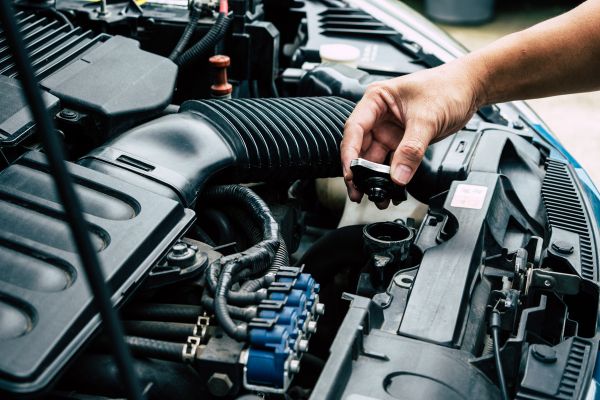It’s easy to take for granted the complex mechanics that keep cars running smoothly. Expand your automotive knowledge with the following six facts about your car’s radiator to understand the functions of this component.
#1. Radiators Have 3 Primary Parts
The core, the pressure cap, and the outlet and inlet tanks make up the radiator. The core contains metal fins to cool the device. It’s also where convection takes place.
Radiators contain immense pressure to cool the entire front end of the vehicle. Without the pressure cap, the coolant would boil over and the hoses and radiator would suffer immensely.
The outlet and inlet tanks bring in hot coolant (inlet tank) and send it out (outlet tank) cooled to the engine.
#2. The Radiator Is Located in the Front of the Engine
When you pop the hood of your car, you’ll see the engine. Look just behind the grille, and you’ll spot the radiator. The grille acts as an apparatus to release air and regulate the engine and transmission’s temperature. The radiator sits at the front of the engine bay because it’s the ideal location to expel heat.
#3. Radiators Operate Through Convection
If you need a science class refresher, convection is the process of transferring heat through the movement of a heated fluid, including air and water. In this case, the fluid is coolant.
The coolant inside the engine absorbs the heat generated by combustion to prevent the engine from overheating. As the heated coolant moves through the radiator, the heat from the coolant transfers to the walls of the radiator tubes. The large surface area of the radiator and its fins allow for efficient heat exchange.
#4. Radiators Run on a Continuous Cycle
When driving, radiators never stop running. As the air passes over the radiator’s fins, it cools the coolant, which recirculates back into the engine to absorb more heat. The process repeats to ensure the vehicle doesn’t overheat.
#5. Impaired Radiators Compromise the Vehicle’s Safety
An impaired radiator can compromise the vehicle’s safety because it cannot adequately cool the engine. You risk your safety when driving and may experience a sudden stop in the middle of the road or severe mechanical failures—from warped engine parts to sparking a fire.
The engine isn’t the only component that’s at risk. Driving with a damaged radiator can affect the transmission, too. If the radiator cannot do its job, the accumulated heat can transfer to the transmission fluid, cause it to break down, and impair its lubricating properties.
#6. The Radiator May Emit Sounds When Malfunctioning
The final fact to provide you with a better understanding of your car’s radiator is that it may make abnormal noises. Pay attention to annoying car noises because you never know when one will signal a detrimental malfunction.
A hissing sound indicates leaking coolant, while bubbling noises suggest air disrupting the flow of coolant. Staying alert encourages you to tend to any vehicular malfunctions promptly.



